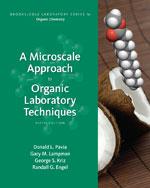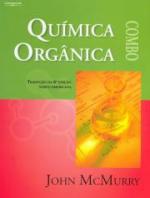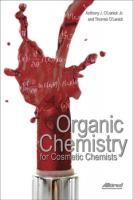Descrição
Contents:
Part One: INTRODUCTION TO BASIC LABORATORY TECHNIQUES.
Experiment 1: Introduction to Microscale Laboratory.
Experiment 2: Solubility.
Experiment 3: Crystallization.
Experiment 4: Extraction.
Experiment 5: Chromatography.
Experiment 6: Simple and Fractional Distillation.
Experiment 6A: Simple and Fractional Distillation (Semi-Microscale Procedure).
Experiment 6B: Simple and Fractional Distillation (Microscale Procedure).
Experiment 7: Infrared Spectroscopy and Boiling-Point Elevation.
Essay Aspirin.
Experiment 8: Acetylsalicylic Acid.
Essay Analgesics.
Experiment 9: Isolation of the Active Ingredient in an Analgesic Drug.
Experiment 10: Acetaminophen.
Experiment 10A: Acetaminophen (Microscale Procedure).
Experiment 10B: Acetaminophen (Semi-Microscale Procedure).
Essay Identification of Drugs.
Experiment 11: TLC Analysis of Analgesic Drugs.
Essay Caffeine.
Experiment 12: Isolation of Caffeine from Tea or Coffee.
Experiment 12A: Extraction of Caffeine from Tea with Methylene Chloride.
Experiment 12B: Extraction of Caffeine from Tea or Coffee Using Solid Phase Extraction (SPE).
Essay Esters¡XFlavors and Fragrances.
Experiment 13: Isopentyl Acetate (Banana Oil).
Experiment 13A: Isopentyl Acetate (Microscale Procedure).
Experiment 12B: Isopentyl Acetate (Semi-Microscale Procedure).
Essay Terpenes and Phenylpropanoids.
Experiment 14: Essential Oils: Extractions of Oil from Cloves by Steam Distillation and Liquid Carbon Dioxide.
Experiment 14A: Oil of Cloves (Microscale Procedure).
Experiment 14B: Oil of Cloves (Semi-Microscale Procedure).
Experiment 14C: Extraction of Oil of Cloves with Liquid Carbon Dioxide.
Essay Stereochemical Theory of Odor.
Experiment 15: Spearmint and Caraway Oil: ()- and ()-Carvones.
Essay The Chemistry of Vision.
Experiment 16: Isolation of Chlorophyll and Carotenoid Pigments from Spinach.
Essay Ethanol and Fermentation Chemistry.
Experiment 17: Ethanol from Sucrose.
Part Two: INTRODUCTION TO MOLECULAR MODELING.
Essay Molecular Modeling and Molecular Mechanics.
Experiment 18: An Introduction to Molecular Modeling.
Experiment 18A: The Conformations of n-Butane: Local Minima.
Experiment 18B: Cyclohexane Chair and Boat Conformations.
Experiment 18C: Substituted Cyclohexane Rings.
Experiment 18D: cis- and trans-2-Butene.
Essay Computational Chemistry¡Vab Initio and Semiempirical Methods.
Experiment 19: Computational Chemistry.
Experiment 19A: Heats of Formation: Isomerism, Tautomerism, and Regioselectivity.
Experiment 19B: Heats of Reaction: SN1 Reaction Rates.
Experiment 19C: Density¡VElectrostatic Potential Maps¡XAcidities of Carboxylic Acids.
Experiment 19D: Density¡VElectrostatic Potential Maps: Carbocations.
Experiment 19E: Density¡VLUMO Maps: Reactivities of Carbonyl Groups.
Part Three: PREPARATIONS AND REACTIONS OF ORGANIC COMPOUNDS.
Experiment 20: Reactivities of Some Alkyl Halides.
Experiment 21: Nucleophilic Substitution Reactions: Competing Nucleophiles.
Experiment 21A: Competitive Nucleophiles with 1-Butanol or 2-Butanol.
Experiment 21B: Competitive Nucleophiles with 2-Methyl-2-propanol.
Experiment 21C: Analysis.
Experiment 22: Hydrolysis of Some Alkyl Chlorides.
Experiment 23: Synthesis of n-Butyl Bromide and t-Pentyl Chloride.
Experiment 23A: n-Butyl Bromide.
Experiment 23B: n-Butyl Bromide (Semi-Microscale Procedure).
Experiment 23C: t-Pentyl Chloride (Microscale Procedure).
Experiment 23D: t-Pentyl Chloride (Semi-Microscale Procedure).
Experiment 23E: t-Pentyl Chloride (Macroscale Procedure).
Experiment 24: Elimination Reactions: Dehydration and Dehydrohalogenation.
Experiment 24A: Dehydration of 1-Butanol and 2-Butanol.
Experiment 24B: Dehydrobromination of 1-Bromobutane and 2-Bromobutane.
Experiment 25: 4-Methylcyclohexene.
Experiment 25A: 4-Methylcyclohexene (Microscale Procedure).
Experiment 25B: 4-Methylcyclohexene (Semi-Microscale Procedure).
Experiment 26: Phase-Transfer Catalysis: Addition of Dichlorocarbene to Cyclohexene.
Experiment 27: Relative Reactivities of Several Aromatic Compounds.
Experiment 28: Nitration of Methyl Benzoate.
Essay Fats and Oils.
Experiment 29: Methyl Stearate from Methyl Oleate.
Essay Soaps and Detergents.
Experiment 30: Preparation of a Soap.
Experiment 31: Preparation of a Detergent.
Essay Petroleum and Fossil Fuels.
Experiment 32: Gas-Chromatographic Analysis of Gasolines.
Essay Green Chemistry.
Experiment 33: Chiral Reduction of Ethyl Acetoacetate; Optical Purity Determination.
Experiment 33A: Chiral Reduction of Ethyl Acetoacetate.
Experiment 33B: NMR Determination of the Optical Purity of Ethyl (S)-3-Hydroxybutanoate.
Experiment 34: Nitration of Aromatic Compounds Using a Recyclable Catalyst.
Experiment 35: An Oxidation-Reduction Scheme: Borneol, Camphor, Isoborneol.
Experiment 36: Multistep Reaction Sequences: The Conversion of Benzaldehyde to Benzilic Acid.
Experiment 36A: Preparation of Benzoin by Thiamine Catalysis.
Experiment 36B: Preparation of Benzil.
Experiment 36C: Preparation of Benzilic Acid.
Experiment 37: Tetraphenylcyclopentadienone.
Experiment 38: Triphenylmethanol and Benzoic Acid.
Experiment 38A: Triphenylmethanol.
Experiment 38B: Benzoic Acid.
Experiment 39: Aqueous-Based Organozinc Reactions.
Experiment 40: Resolution of (±)- a-Phenylethylamine and Determination of Optical Purity.
Experiment 40A: Resolution of (±)-a-Phenylethylamine.
Experiment 40B: Determination of Optical Purity Using NMR and a Chiral Resolving Agent.
Experiment 41: The Aldol Condensation Reaction: Preparation of Benzalacetophenones (Chalcones).
Experiment 42: Preparation of an a,ß-Unsaturated Ketone via Michael and Aldol Condensation Reactions.
Experiment 43: Enamine Reactions: 2-Acetylcyclohexanone.
Experiment 44: 1,4-Diphenyl-1,3-butadiene.
Experiment 44A: Benzyltriphenylphosphonium Chloride.
Experiment 44B: Preparation of 1,4-diphenyl-1,3-butadiene Using Sodium Ethoxide To generate the Yilde.
Experiment 44C: Preparation of 1,4-diphenyl-1,3-butadiene Using Potassium Phosphate To Generate the Yilde.
Essay Local Anesthetics.
Experiment 45: Benzocaine.
Experiment 46: Methyl Salicylate (Oil of Wintergreen).
Essay Pheromones: Insect Attractants and Repellants.
Experiment 47: N,N-Diethyl-m-toluamide: The Insect Repellent OFF.
Essay Sulfa Drugs.
Experiment 48: Sulfa Drugs: Preparation of Sulfanilamide.
Essay Polymers and Plastics.
Experiment 49: Preparation of Properties of Polymers: Polyester, Nylon, and Polystyrene.
Experiment 49A: Polyesters.
Experiment 49B: Polyamide (Nylon).
Experiment 49C: Polystyrene.
Experiment 49D: Infrared Spectra of Polymer Samples.
Essay Diels¡VAlder Reaction and Insecticides.
Experiment 50: The Diels¡VAlder Reaction of Cyclopentadiene with Maleic Anhydride.
Experiment 51: Photoreduction of Benzophenone and Rearrangement of Benzpinacol to Benzopinacolone.
Experiment 51A: Photoreduction of Benzophenone.
Experiment 51B: Synthesis of �Ò-Benzopinacolone: The Acid-Catalyzed Rearrangement of Benzpinacol.
Essay Fireflies and Photochemistry.
Experiment 52: Luminol.
Essay The Chemistry of Sweeteners.
Experiment 53: Analysis of A Diet Soft Drink by HPLC.
Part Four: IDENTIFICATION OF ORGANIC SUBSTANCES.
Experiment 54: Identification of Unknowns.
Experiment 54A: Solubility Tests.
Experiment 54B: Tests of the Elements (N, S, X).
Experiment 54C: Tests for Unsaturation.
Experiment 54D: Aldehydes and Ketones.
Experiment 54E: Carboxylic Acids.
Experiment 54F: Phenols.
Experiment 54G: Amines.
Experiment 54H: Alcohols.
Experiment 54I: Esters.
Part Five: PROJECT-BASED EXPERIMENTS.
Experiment 55: A Separation and Purification Scheme.
Experiment 56: Preparation of a C-4 or C-5 Acetate Ester.
Experiment 57: Extraction of Essential Oils from Caraway, Cinnamon, Cloves, Cumin, or Fennel by Steam Distillation and Liquid Carbon Dioxide.
Experiment 57A: Isolation of Essential Oils by Steam Distillation.
Experiment 57B: Identification of the Constituents of Essential Oils by Gas Chromatography¡VMass Spectrometry.
Experiment 57C: Investigation of the Essential Oils of Herbs and Spices¡XA Mini-Research Project.
Experiment 57D: Extraction of an Essential Oil with Liquid Carbon Dioxide [New for 4e].
Experiment 58: Competing Nucleophiles in SN1 and SN2 Reactions: Investigations Using 2-Pentanol and 3-Pentanol.
Experiment 59: Friedel¡VCrafts Acylation.
Experiment 60: The Analysis of Antihistamine Drugs by Gas Chromatography¡VMass Spectrometry.
Experiment 61: The Use of Organozinc Reagents in Synthesis: An Exercise in Synthesis and Structure Proof by Spectroscopy.
Experiment 62: The Aldehyde Enigma.
Experiment 63: Synthesis of Substituted Chalcones: A Guided-Inquiry Experience.
Experiment 64: Michael and Aldol Condensation Reactions.
Experiment 65: Esterification Reactions of Vanillin: The Use of NMR to Solve a Structure Proof Problem.
Experiment 66: An Oxidation Puzzle.
Part Six: THE TECHNIQUES.
Technique 1: Laboratory Safety.
Technique 2: The Laboratory Notebook, Calculations, and Laboratory Records.
Technique 3: Laboratory Glassware: Care and Cleaning.
Technique 4: How to Find Data for Compounds: Handbooks and Catalogs.
Technique 5: Measurement of Volume and Weight.
Technique 6: Heating and Cooling Methods.
Technique 7: Reaction Methods.
Technique 8: Filtration.
Technique 9: Physical Constants of Solids: The Melting Point.
Technique 10: Solubility.
Technique 11: Crystallization: Purification of Solids.
Technique 12: Extractions, Separations, and Drying Agents.
Technique 13: Physical Constants of Liquids: The Boiling Point and Density.
Technique 14: Simple Distillation.
Technique 15: Fractional Distillation, Azeotropes.
Technique 16: Vacuum Distillation, Manometers.
Technique 17: Sublimation.
Technique 18: Steam Distillation.
Technique 19: Column Chromatography.
Technique 20: Thin-Layer Chromatography.
Technique 21: High-Performance Liquid Chromatography (HPLC).
Technique 22: Gas Chromatography.
Technique 23: Polarimetry.
Technique 24: Refractometry.
Technique 25: Infrared Spectroscopy.
Technique 26: Nuclear Magnetic Resonance Spectroscopy (Proton NMR).
Technique 27: Carbon-13 Nuclear Magnetic Resonance Spectroscopy.
Technique 28: 6 Mass Spectrometry.
Technique 29: Guide to the Chemical Literature.
Appendices:
Appendix 1. Tables of Unknowns and Derivatives.
Appendix 2. Procedures for Preparing Derivatives.
Appendix 3. Index of Spectra.




